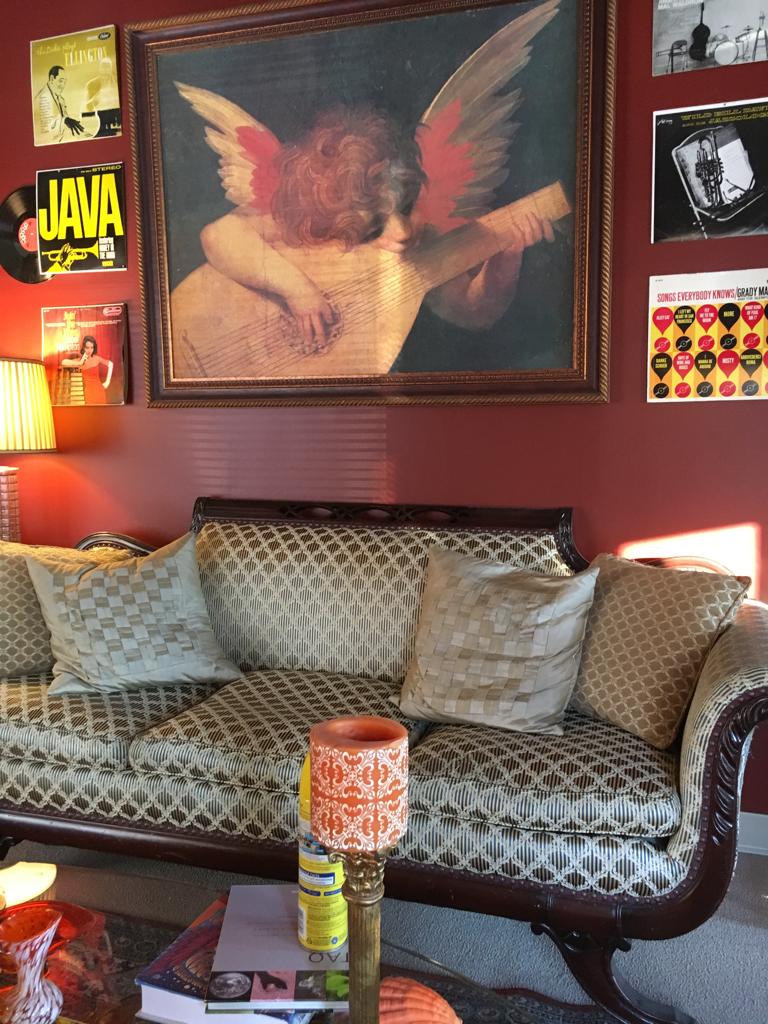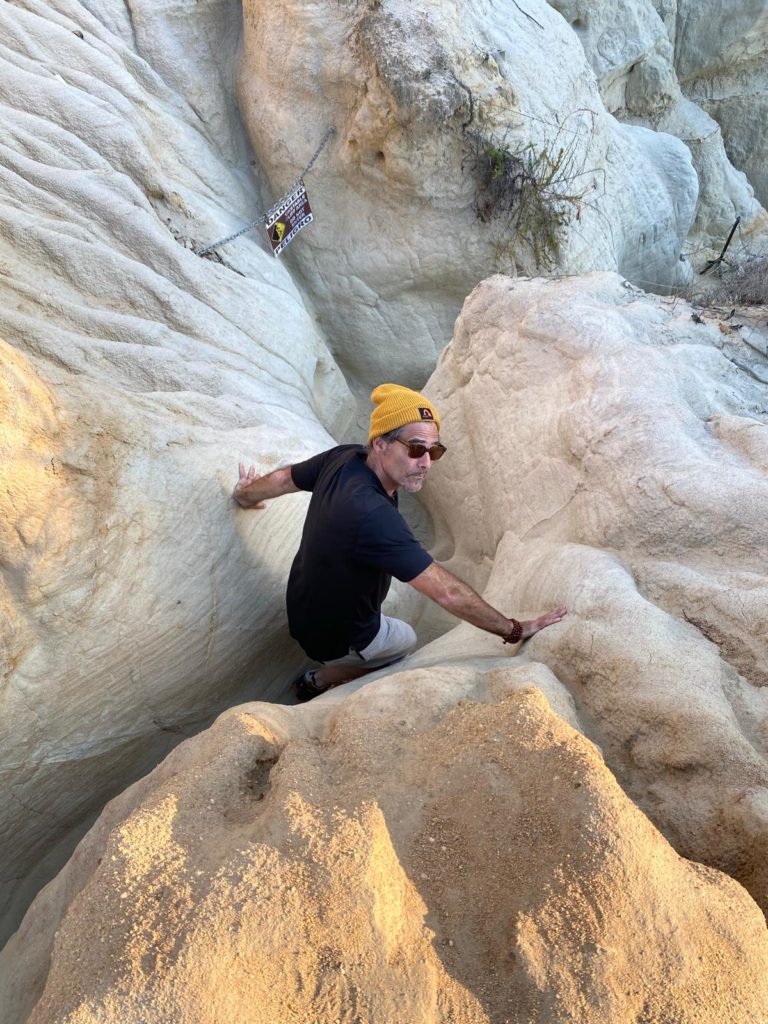We’ve left it open for you, so you don’t even need one of those little keys. Because writing is life, and keeping it real means forgoing the line between the personal and the professional.
Book Architecture Turns 20
Madison Utley speaks to Book Architecture Founder and Principal, Stuart Horwitz, upon the 20th anniversary of his independent editing business; how did he reach this milestone, what has he learned along the way, and what’s in store for the future?
(No, he does not get special treatment simply because he’s the boss. My new interview format is my new interview format).
MU: Initially, what appealed to you about a career as an independent editor?
SH: I was speaking to my colleague, Anita Mumm, about this and she told me that one day she had an aha moment about wanting a writing life. I think that’s what hits all of us independent editors at some point. I wanted a life that has to do with the thing that I love, which is books and writing and words. There are more traditional routes and less traditional routes to getting there; for me, heading towards independent editing had to do with avoiding any more toxic bosses than I had already experienced. It was terrifying to have my life in someone else’s hands, for them to be able to handle my well-being whimsically–especially as I got into my thirties.
MU: How did the vision that you had in your mind for what your business could be 20 years ago match up to how it has actually unfolded?
SH: I didn’t expect Book Architecture to be my full-time job; originally, it was supposed to be a way to make money while I went to graduate school in East Asian studies. My goal was to become a professor of Buddhism. But over time, I came to find that the academic future I pictured was an image that I had for myself rather than my actual path.
Concurrent to this realization, there were changes happening in the industry that were radically increasing demand for independent editors. The advent of self-publishing, the profusion of e-books–it was sort of like buying a stock at the right time. I was doing better financially than I would have as a professor, but it wasn’t just that; I was also getting a much broader context of exposure to the world through the projects I was doing. It was all just happening, and some of that is certainly luck. If I sit here and look at the last year, two years, five years, twenty years, it’s clear that nothing is clear. Book Architecture was just meant to happen. I figured it out before it was too late; that’s the only credit I feel like I deserve.

MU: Where did the name Book Architecture come from?
SH: I did an architecture course during my first master’s degree. There was so much more artistry to it than I realized, in the proportion and emphasis and repetition of stylistic icons. It struck me as a symphony in stone, something creative but also solid. That’s what I wanted to bring to my business; something beautiful, but also built to last. That is book architecture.
Book Architecture also represents hope. The hope that you can structure your octopus of a manuscript in progress, that there’s some kind of clarity and sanity to be found. The hope that your voice is enough, that you as an author are enough. The hope that the critics in your head saying you can’t do it can be silenced and your creativity is inexhaustible. That hope has become my mission of sorts, to help strengthen the roots of confidence within others and myself.
MU: Something we’ve talked a lot about is the intensity of this job, in being brought into clients’ worlds and entrusted with the details of the most meaningful and, often, the most painful parts of their lives. Can you talk about how that’s been?
SH: These are the things that make for the best books, so if I’m in a situation in which things feel flat or uninspiring, I’ll usually start digging to see what we can liberate. But truly, in these situations of working with a client before they go to prison or a client with a terminal cancer diagnosis who is aware they’ll die before the book comes out, it is a profound privilege to tell their story. Some of the books I’ve worked on with these kinds of stressors have impacted me profoundly and changed the way I view the world. Experiencing that was part of what validated my leaving academia; this work became better than more formal education. The courses I take now are all one-on-one, they’re more varied, and there’s a richness, an immediacy, a real-lifeness to them.
When you’re in the groove and collaborating together with someone, it feels like a multiplication and not an addition. So, being able to be in the creative process with people of quality, and getting paid for it, and setting my own hours? Yeah, sounds good.
MU: How has helming Book Architecture impacted your personal writing endeavors?
SH: One of the best things about this job is that it has allowed me to work on my own writing concurrently, whether that was my three theoretical books on writing, my memoir (which is in a very exciting phase), or the novel that I’m currently working on, which is incipient but glowing. I think there are some people who feel like they can’t work with words and then also do their own writing, like somehow they’ll be using up their talent or it’s too much in the same headspace. I can empathize with that. For many years, I thought I had to wait tables, because that way I would have my creative energy all to myself. That makes sense in theory, but in reality I was existing in a toxic and draining environment. While my creativity may have been safe and untouched, nearly every other kind of energy was being sapped, which seriously inhibited my ability to sit down and write effectively.
 Committing to my business full-time and being in control of my own destiny has had a huge impact on how quickly I’m able to clear my mind before a good writing session starts. Now, there’s a lot of cross-flow between the work I do for Book Architecture and the work I do for myself. I can do my job for five hours and then I can take a break, exercise, meditate, go to the coffee shop, whatever, and then write at night. I’ve created the context and learned the tools I need to access that headspace.
Committing to my business full-time and being in control of my own destiny has had a huge impact on how quickly I’m able to clear my mind before a good writing session starts. Now, there’s a lot of cross-flow between the work I do for Book Architecture and the work I do for myself. I can do my job for five hours and then I can take a break, exercise, meditate, go to the coffee shop, whatever, and then write at night. I’ve created the context and learned the tools I need to access that headspace.
MU: What are you most excited about moving into a new decade of Book Architecture?
SH: In thinking through my answer to this question, I realize that Book Architecture is able to fit with everything that I want to do with my life moving forward. My wife and I are anticipating opening up a retreat center for writers in the next two years or so, and I fully intend for my work as an independent editor to continue through that. If there are areas of life that I’m more interested in learning about, I can seek out those clients. If I want to work more, I can get more clients. If I want to work less, I can get less clients. If I want to go be a digital nomad, done. I’m there. Over the past 20 years, it seems Book Architecture has become intrinsic to my identity and my lifestyle–and I don’t expect that to change anytime soon.

Hi Stuart,
I love your writing here. It’s crisp and clear, something I’m having trouble with in my own manuscript,
Kay, in Providence
I greatly appreciate the compliment Kay, but the kudos really go to the article’s author, Madison Utley!
Stuart, really enjoyed reading the interview!
Thank you so much, Mike! Can’t wait until your book comes out!